When perfumistas with vast, expensive fragrance collections and tastes similar to yours urge you repeatedly to do something because “you’ll love it,” a person tends to listen. Again and again, before my Paris trip, I was told that I had to go to Oriza L. Legrand, not because I am a history fanatic, but because of the sophistication, complexity, depth and elegant luxuriousness of their perfumes.
I’m glad I listened, because I was utterly entranced. The history is fantastic, the boutique utterly adorable and filled with quirky personality, and the perfumes are lovely. In one case, so absolutely incredible that it stopped me in my tracks while on my way to buy my precious bell-jar from Serge Lutens. Those of you who know me (and my feelings about Serge Lutens) will realise that it takes a hell of a lot to make me turn around in my set journey to my perfume mecca — let alone to get distracted enough from Serge Lutens to buy another perfume, then and there, and after a mere 15 minutes!
But that is precisely what happened with Oriza L. Legrand‘s Chypre Mousse, a fragrance that I will review (along with some others from the line) in another post. The funny thing is that I had actually gone to Oriza with plans to investigate a completely different perfume, a patchouli-cognac-amber fragrance called Horizon whose lengthy list of notes had called to me like a siren song. It’s a beautiful patchouli-amber, but, in the end, it could not compare to the utterly haunting, unique loveliness that is Chypre Mousse. To me, Chypre Mousse is the damp, mossy, forest, leafy version of Serge Lutens‘ delicate floral triumph, De Profundis. My fellow blogging friend, Undina, once described De Profundis as a “homage to life,” and I think that beautiful phrase is also the ideal way to describe Chypre Mousse. I mean it quite seriously when I say that I think the perfume is a masterpiece.
I was impressed enough by Oriza L. Legrand (hereinafter just “Oriza“) that I decided to begin my coverage with a little overview of the brand. So this post will address Oriza’s history, its return to the perfume scene, and, at the very end, some of the fragrances that stood out for me. It will also focus on how the perfumes may have changed from their very original formulation. I was lucky to stumble across a superb interview with one of Oriza’s new owners in which he explains how he’s dealt with perfume formulas that go back to 1899 and the early 1900s, the tweaks he’s made in order to offer a slightly modernized version, some very famous fans of the new fragrances, and more.
In addition, I have to include some photos from my own time in the boutique. I loved the time-capsule feel of the store with its vintage posters or adverts from the early 1900s, its quirky collection of bow-ties made from vintage silk, and its brightly coloured window displays. As usual for this trip, my tiny camera wasn’t very cooperative. Nonetheless, I hope it gives you a little sense of what the Oriza boutique is like, especially if you are planning a visit to Paris. At the very end will be a discussion of some of my favorite Oriza perfumes thus far, along with their notes, and an explanation of how you can try the line for yourself.
THE HISTORY:
1720, King Louis XV, and famous beauties. Far before Guerlain, Grossmith, Creed or the like, there was Oriza L. Legrand. The brand originated with Fargeon the Elder who set up his first shop in the Louvre Palace’s central court, and who made a fragrance for the young king. It probably helped Oriza even more that Fargeon’s potions and creams were rumoured to be the secret of Ninon de Lenclos, a great courtesan known for her beauty and eternal youth.

Composite of old Oriza photos and adverts, created by forevergreen.eu .
http://forevergreen.eu/a-fleur-de-peau/reliques-parfumees/
In a 2012 interview with the French blog, Flair Flair, one of Oriza’s current owners, Franck Belaiche, explains both the company’s name and what happened next:
As for the name of the house, it derives from Oryza Sativa, the latin name for rice, which was part of the cosmetics’ ingredients.
Then in 1811, Louis Legrand took over the house as he understood all the potential prestige it had. With its fragrant creations, he pushed it to its full extent. It is him who introduced the perfumes in the house although Fargeon, in his time, had created a fragrance for Louis XV, the young king.
He created the most refined, the most exquisite, the most complex things. Legrand was a true fragrance artist, like the perfumers one encounters in [Patrick Suskind’s book] Le Parfum. […][¶]
[Eventually] Oriza was one of the rare houses that provided the Courts of Russia, England, Italy and France. In France, it lasted until Napoleon 3. The house was also one of the firsts to turn its fragrances into lines of products. It has become the most natural thing now, but it wasn’t back at that time. For Déjà le Printemps, you had a perfume, a powder, make-up, soaps… You see, when I saw the industrial, powerful and innovative aspects of the house, I fell in love right away. I wanted to give it a second birth and give it its prestige back.
At the start of the 1900s, Oriza continued to enjoy success. It participated in the World Fairs, which were very big things back then and one of the rare occasions when the very best artisans, merchants, and luxury lines could present all their wares in one place. In essence, it was a sort of prestigious Olympics.In 1889, Oriza took home the Gold Medal for its perfumes but, in 1900, it received the very top honours with the Grand Prize. I’ve found a photo of the perfume which may have won and which may have been named after Prince Albert, Queen Victoria’s consort.
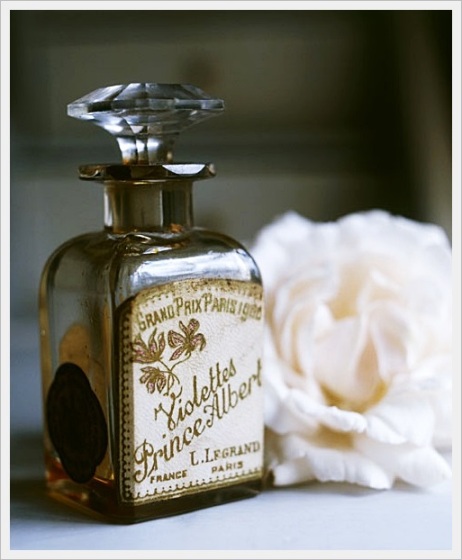
One of the ancient Oriza bottles, in baccarat crystal as many used to be. The name of this one translates to “Violets Prince Albert” and it seems to be the Grand Prize winner at the 1900 World Fair. Source: lylouannephotos.blogspot.com with the photo originally from Flickr.
Then, alas, things came to a crashing halt in the 1930s, and obviously WWII didn’t help matters. The house completely died.
THE RETURN OF ORIZA L. LEGRAND:
Decades later, a perfume lover stumbled across the Oriza name while doing research in a library. It was Franck Belaiche. As he told Flair Flair in the interview linked above, his background was in the movie and television industry, but he loved perfumes. So, he bought the brand with the goal of putting it back on its feet:
I’d spotted Oriza Legrand while doing some research and reading in libraries. Soon, I was fascinated by its story and how it was a precursor of so many things. The house seemed to me like it was one of the creating actors of today’s perfumery. […]
What did you think when you bought it? What did you want to do with it?
I wanted to make it modern while keeping its essence and soul intact. I first had to select, among the 80 fragrances that had been created, which ones were likely to be adapted, reworked from their original formulas, and still be appealing. A good number of them are not easy to wear, especially since Raynaud and the steam extraction technique gave birth to many florals. But there were also a few synthetic molecules which allowed the creation of what we would call today “orientals”. I’ve had to work with the labs to see what we could do based on the formulas and also on the juices, since I have managed to get hold of some old, full bottles. I wanted to get close to the old perfumes while making them modern, without betraying them.So from the beginning you wanted to make these formulas contemporary? It was never about saying “This is exactly what perfume smelled like back then”?
No, and let’s face it, that would have been impossible. First because of the raw materials that we can no longer use, and also because it would have mean making sent-bon (French for smell good). Besides, although these fragrances were high quality, they correspond to a time that is not necessarily ours. With Déjà le Printemps, just like the three others, we are very close to the original, but there is this little something that makes it modern. Careful though, reworking a fragrance does not mean making it attractive to a majority. Right now, I am working on the next two perfumes, which will come out at the end of January.
The whole 2012 interview is fascinating, excellent, and really informative. I urge any of you who may be interested in the technical aspects of how ancient fragrances are brought back to life, to read it in full. It addresses everything from the work process with the laboratory in Grasse and its chemists and perfumers, to the way that perfumes have changed since the time of Louis XV, and the company’s future plans. You can also learn more about Oriza, its current ownership, and the reconstruction of its scents from the lovely Caro of Te de Violetas who interviewed Mr. Belaiche back in September of this year.
One part I found interesting in the Flair Flair interview was Mr. Belaiche’s explanation for why all the new “re-edits” of the original Oriza line pertained to its 1900-era fragrances, instead of the 1720s one. As he explains, it would not have been easy to do a tweaked version of something like Violette du Tsar, a perfume created for the Tsar of Russia. Moreover, “not a lot of people would have enjoyed it, and then starting with old perfumes didn’t seem to me like a relevant way of bringing the house back to life.” (But aren’t you dying to know what that may have smelled like?!) Clearly, Mr. Belaiche is not trying to recreate fragrances merely for the sake of nostalgia and historical curiosity. Instead, he wants to do the house proper justice by making Oriza a viable, current, commercially successful brand with a long-term future. In other words, he’s not trying to create a museum, but a living and breathing house that has a chance of success beyond just the initial curiosity factor.
I met Mr. Belaiche when I went to the Oriza boutique, along with his business partner and fellow Oriza owner, Hugo Lambert. They were both charming and very kind, though Mr. Belaiche seemed to blink a little at the extent of my enthusiastic outbursts over the fragrances and their quality. I don’t think he’s used to someone babbling a thousand words of English a minute, mixed in with French, while sniffing everything, taking photos from every angle, suddenly stopping in their tracks to announce “Aha! Armagnac! This has aged cognac in it!” in response to one fragrance, and being the sort of whirlwind that is rather uncommon to the very restrained French. I hope he took it as the compliment that it is — there are many niche perfume houses these days, I’m extremely hard to please, and I rarely find a brand to have impressively sophisticated, high-quality, original, creative or luxurious offerings almost across the entire line.
I’d like to thank Mr. Belaiche for letting me take photos of the boutique, and I can only apologise to him for my camera taking such poor photos. While I’m at it, I’d also like to thank Mr. Lambert for providing me with a small decant of the beautiful patchouli scent, Horizon, to go with my purchase, even though he had to dig up a long vial from the back. As a side note, I wish I had managed to take photos of all the vintage Oriza posters and adverts framed under glass in the store. They were fascinating, and I’m so glad the new owners have kept the brand’s aesthetic, both in terms of the feel of their boutique and their perfume’s packaging. I’m a complete sucker for Art Deco, so I love Oriza’s brightly coloured labels with the old-style, vintage fonts.
Without further ado, here are a few photos of the Oriza store on rue Saint-Augustin:

Some of the soaps from the Oriza line, along with boxed perfumes wrapped in wonderfully old-fashioned, patterned paper.
THE PERFUMES TODAY:
I think Oriza is going to go places simply because the majority of its perfumes really don’t smell like anything else that I’ve encountered. (Chypre Mousse…. oh, Chypre Mousse!!!) They have the classique feel of fragrances created in decades gone by, much like the very old Guerlains legends. It is a feel that — somehow, I don’t know how — seems miraculously untouched by the impact of IFRA. Like Sleeping Beauties put to sleep in 1900 and awakened today, the Oriza fragrances have body, layers of notes, a very rich, concentrated feel, and the elegant signature of something that is both very French and very “perfume.”
That said, I don’t think the perfumes are generally something that a novice perfumista with commercial tastes would relate to very well. These are not scents that someone used to Estée Lauder‘s Beautiful or Viktor & Rolf‘s Flowerbomb would understand. I think that perfumistas whose tastes skew towards uncomplicated, light, clean, and wispy scents would also struggle a little. None of the Oriza fragrances that I’ve tried thus far would qualify as “wispy” or simple — thank God. They’re nothing like the By Kilian‘s with their largely straightforward, basic nature, or sometimes gourmand fruitiness. They’re too purely French to be like an Amouage or a Neela Vermeire, though they sometimes share both those house’s opulent sophistication. They’re full-bodied and with a vintage feel in terms of both their potent richness, their complexity, and their sophistication. If you like the early Guerlains, the complicated originality of some Serge Lutens creations, or the sophisticated weight of Roja Dove’s fragrances, then Oriza L. Legrand will be for you.
Thus far, Oriza has seven “returned” fragrances. The list of the eau de parfums with their original date of creation:
- Relique D’Amour (1900)
- Rêve d’Ossian (1900) -(Fragrantica gives a different debut date for Reve d’Ossian which it lists as a 1905 creation, but I’m going by what was listed in Oriza’s own shop window in Paris.)
- Oeillet Louis XV (1909)
- Jardins d’Armide (1909)
- Chypre Mousse (1914) (Fragrantica incorrectly states that this one is from 1920.)
- Déjà Le Printemps (1920)
- Horizon (1925).
Though I haven’t finished testing the whole line yet, the ones I have loved the most thus far have been three. Chypre Mousse wins, hands down and by a landslide, as one of the most fascinating, haunting, evocative chypres I’ve smelled in ages. It is then followed with Horizon and Reve d’Ossian in a neck-and-neck position. The florals that I’ve briefly and cursorily tested thus far have sometimes smelled dated to me, though generally not in a bad way. Only one of those triggered a strongly negative reaction: Jardins d’Armide, which felt too painfully difficult and old-fashioned with its heavy powder and its soapy feel. However, my perception has to be put in the context of one who dislikes powdery scents, and who loathes anything soapy, even expensive floral soap!
So, what are the notes in some of my favorites? Oriza provides the following details for my top 3:
- Top Notes tonic & balsamic: Wild mint, clary sage, wild fennel & green shoots.
- Heart notes aromatic & flowing properties: Oakmoss, Galbanum, Angelica, fern, wild clover, Mastic & Violet leaves.
- Backgrounds Notes mossy & leathery: Vetiver, Pine Needles, Oak Moss, Mushroom fresh Humus, Roasted Chestnut Leather, labdanum & Balms.
- Top Notes: Frankincense and Pine woods.
- Heart Notes: Cinnamon, Benzoin, Tonka Bean and Opopanax [sweet myrrh].
- Base Notes: Tolu Balm, Sandalwood, Leather, Labdanum, Amber and Musks.
- Top Notes: Bitter orange, Tangerine Confit & Dried Rose.
- Heart Notes: Cognac Amber, Aromatic Tobacco Leaves, Cocoa, Roasted Almonds, Old Oak & Patchouli.
- Base Notes: Benzoin, Amber Gray [ambergris], Peat, Tabac Blond, Vanilla, Honey & Soft Leather.
One thing that I need to emphasize about many of these note lists is that I don’t think they accurately convey the real nature of the fragrances. One reason is that the perfumes are superbly blended and a bit linear, so that you often get an overall effect, rather than a detailed, distinctive sense of each of their parts. For another, something about many of these fragrances is… well, for lack of a better term, other-worldly. I’ll be honest and say that one reason why I’ve put off reviewing Chypre Mousse is that I’m not sure I could even BEGIN to describe it properly and in-depth. I’m not one who is usually at a loss for descriptors or olfactory adjectives, but Chypre Mousse may be beyond my abilities. The smell is simply like nothing I’ve encountered.
Given how many of the perfumes really are a “sum total” effect due to their seamless, fluid, often linear structure, I fear I’m merely going to have to give descriptive snippets of each. At times, my account may amount to instinctive abstractions, as in the case of Relique d’Amour:
- Top notes: Fresh Herbs, Pine.
- Middle notes: Powdery Notes, White Lily, Pepper, Oak, Incense, Myrrh, Elemi.
- Base notes: Musk, Moss, Waxed Wood, Woody Notes, Pepper.
Oriza describes it as “the smell of an old chapel of Cistercian abbey.” I think that gives a misleading impression of the perfume, as do the notes themselves. It is far from a dusty, cold, dark, foresty, woody, High Church olibanum/myrrh scent. To me, it’s a very complex, unusual, quite twisted take on a lily scent that actually feels like a Serge Lutens, only very old in nature. Relique d’Amour is different, original, and stands out a mile away — and it won’t be easy to summarize it in the upcoming review. [UPDATE 11/6 — You can find my reviews of the full Oriza line at the following links: Chypre Mousse, Horizon and Reve d’Ossian in one post; and the 4 remaining, largely floral fragrances in this second post.]
All in all, I think Oriza L. Legrand is a line that is definitely worth exploring. Though there are no U.S. retailers (yet), it’s easy to order directly from the company. In addition to the full bottles of the perfumes, they offer a sample set of the complete line. It’s quite inexpensive at €9 for 7 fragrances that come in 2 ml vials, thereby giving you quite a few test wearings. I think it’s well worth the minimal cost, and I believe Oriza ships the samples world-wide. If you’d like to sniff very elegant, very French, perfumed Sleeping Beauties, brought back to life after more than a century and in a largely unchanged form, give Oriza a try.




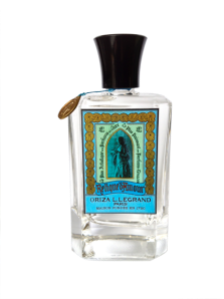






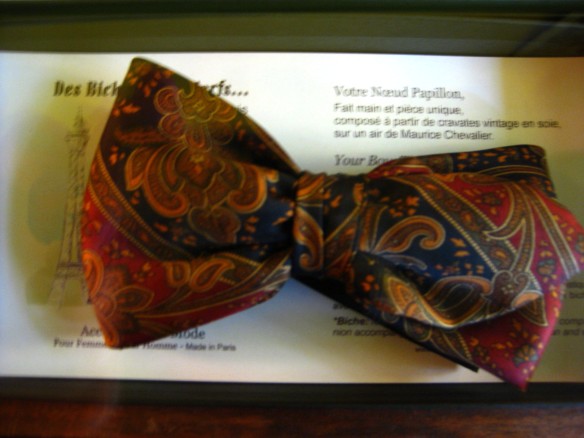
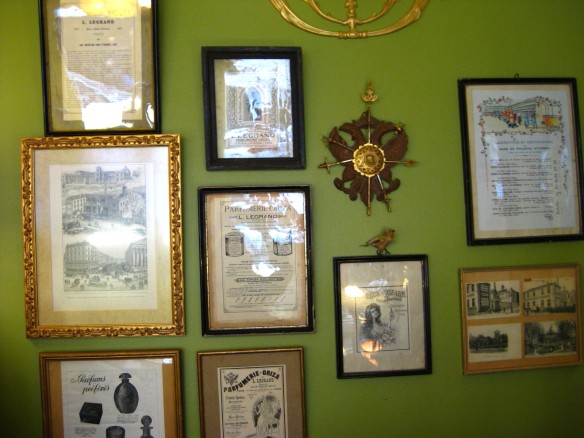
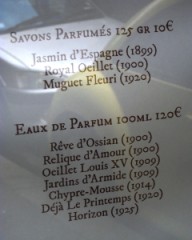

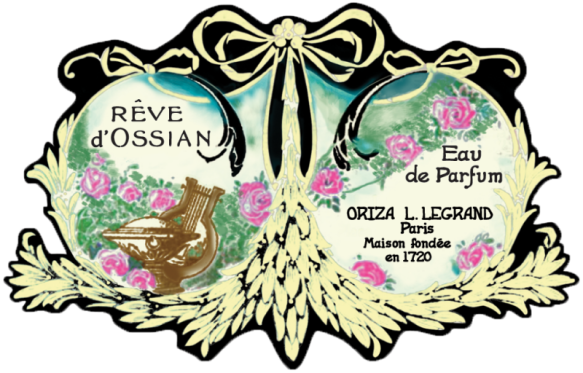

Thanks to interview de Caro (violet tea) I was lucky enough to request 7 Oryiza samples. Really well made with great finesse. From the samples I received I liked more:
Horizon
Reve d’Ossian
Chypre Mousse
I wish to highlight the kindness of Mr. Hugo Lambert. For me it was to relive the history of French fragrances.
Nice review Kafka. I like it.
Dear Walter, I’m so glad Caro led you to Oriza and, even more so, that you had a good experience with the line and the shipping. It sounds like we have the same favorites, too. Should I assume that you listed them in order of preference with Horizon being in 1st place? Regardless of the particular scent, you’re right, they are all done very well. “Finesse” is the perfect word, I think. 🙂
Well, I went and pulled the trigger on a sample set. What else will you lead us into?
LOLOLOL! I laugh every time I read that last sentence. *grin* It’s a cool trip through history, I think, and Walter said it well when he described the perfumes as having finesse. I don’t know if you will enjoy the dated feel of some of the florals, but if you love chypres, I have high hopes for the Chypre Mousse. Actually, there is really something for all tastes in the collection, so I hope that there is one which appeals to you. 🙂
Dear Kafka, I think I have heard you mention Oriza L. Legrand before, but had no idea about the brands history and age! The history fanatic in me is excited to go, even though I must admit that the fact that there are no 1720 fragrances recreated is dissapointing to me, but I guess 1900 could do if they are amazing. And the price seem to be within the realm of possibility…But where is Rue Saint Augustin? Is it in district 8 or 7 or 6 or? I hope a can have some time to visit this place but it´s going to be even better if it´s in my way or in the area I´m going to be staying in. Leaving in two days from now 😀 . I love the fact that you talked about the brands history because I wouldn´t be as interested in it as I am now if I didn´t know about it, so thank you Kafka 🙂 .
Hon, Rue Saint-Augustin is in the 2nd Arrondissement, a few blocks away from the Opera, so take a metro to that stop, get out and stare closely at the maps of the nearby streets that are always placed near the metro exits, and you should be able to see it. It’s a small tiny street, almost at a diagonal angle to the Opera. If your back is to the Opera, you’d continue to walk up and away from it, then turn left-ish (I think), and it would be a few streets away. I’m so excited for you and for your trip! Just a day away! If you’re ever in the 4th Arrondissement, near the Marais, you should go to Marie-Antoinette (which is the only other place in Paris to carry the Oriza perfumes), and which has a lovely selection of stuff. More reasonable in price than Jovoy perhaps, but only about 1/8th the size of the Jovoy collection.
Oh great 🙂 if it is in the Opera district I could definitely find it since I´m going to go to both the Opera Garnier and the Opera Bastille, and you can be sure that I´m going to see Le Marais, it´s actually in my lenghty to do list. I know I only have 11 days and one will be knocked down since I´m going to dedicate that day to Versalles, the whole domain or at least everything that is open to the public and the gardens. Even then I will try to go to Jovoy at least, hopefully also to this store or the Marie Antoinette one, although my top priority is to see districts, historical sites, museums and a few stores. Food is also on the list but number one is history! Too bad that these stores are not in the Luxembourg gardens area where I will be staying 🙁 , but even then I´m sure to still go to both the Marais and Rue St. Honore, Vendome etc. so hopefully I will stumble on at least one of these gorgeous perfume boutiques 😛 . You should see my 10 page to do list! Ican foresee I´m going to end up very tired but happy 🙂 .
Yes, I jumped on the samples as soon as … Horizon and the Chypre particularly grabbed my attention :).
I’m so glad, Jane! You’ll have to let me know what you think of the two fragrances when they arrive. I don’t know your tastes, so I can’t guess how you’d feel about the florals in the line and their more dated feel. Do let me know if there are any you love. 🙂 At the very least, you’ll get the chance to test some very unusual perfumes that really evoke the past.
I will :).
Wow, for a scent to make you giddy like that it must be pretty amazing. You’re usually spot on with the ones you give a thumbs up to because I’ve liked quite a few of them. I love the back story of the fragrance house. I always find those interesting. I imagine it’s not easy to bring a house back to relevance while staying somewhat true to the original design.
It must be so hard to stay generally faithful to something that’s over a 100 years old, while making it something that would appeal to very different modern tastes! I’m not sure I would enjoy a fragrance from 1720, given that the ingredients available at the time were extremely limited and the main purpose of scent in those days was to blanket out a lack of hygiene. I’m sure it would be so powdery and floral, as so many of them were back then. And Ugh to that. So, in that sense, I’m really glad they stuck to the more “modern” ones from the 1900s.
There is one in the line, Reve d’Ossian, that I think would appeal to you in particular, Poodle. It’s very Church-y incense, but with a warmer, heavier and significantly woodier/foresty feel than something like Heeley’s Cardinal or Duchaufour’s Dzongka.
The sample set is awesome, and a great deal. And Chypre Mousse. *drool* It’s so good. SO, so, so good! It will be interesting to see the future of the house – Chypre Mousse smelled so old-fashioned to me (not in a bad way whatsoever – I adored it!) and I think a lot of the other ones must smell the same as well (I can’t say for sure as I haven’t gone through the whole set yet). I feel like even SL’s difficult perfumes have a number that would appeal to the masses, I wonder if that’s the same fr Oriza as well. Hopefully, for their sake, they do. What I wouldn’t give to smell some of their oldest scents, though – I imagine a house going back nearly 300 years must have created some truly amazing things. I’d love to know what sorts of scent were popular then, and how they smelled on the people then who didn’t bathe as often as we do, etc. Such an interesting and lush history behind them, and hopefully a long future ahead!
As I was just telling Poodle, I’m rather glad they’re not going with the 1700s scents, because I’m not sure I’d like them very much. They must have been so powdery and intensely floral to counteract the strong odors of the day! I keep thinking of Patrick Suskind’s Perfume, its descriptions of Paris back in 1760, and the perfumes that were made at the time. Specifically, Grenouille’s original perfume mentor. I’m not sure his fragrances would be my cup of tea.
That said, from a purely historical standpoint, wouldn’t it be amazing to know what the Tsar of Russia wore and just what sort of violets he wafted??!!! Or how his violets differed from those of Prince Albert? It would be fascinating.
As for the modern Oriza line, I think Chypre Mousse smells too different and unusual to have an old-fashioned feel, or even a modern one. For me, it’s just… something wholly different, apart from time. But that’s just me. I think the others definitely have a dated aspect to them and a few remind me of Serge Lutens’ fragrances, only older in feel. I don’t know how people are going to react to some of them, especially the florals, but €9 isn’t a huge financial investment, so hopefully, it will okay.
It would definitely be amazing to know how the Tsar of Russia smelled 😀 ,honestly even if a 1700 fragrance smelled bad I would probably still want it, just because I would feel warm happiness inside, just thinking that I´m using the same perfumes that people from centuries ago used. I would truly be happy even if the perfume was weird or smelled old 😛 .
You’re a true history junkie, my dear! I love it. 🙂 🙂
You are such a perfume temptress! I love the retro look of their bottles and if you love them then they are definitely worth a sniff. Plus, I am always happy to support any brand who nicely sells samples at a decent price. Thanks for letting us know about such a wonderful brand.
I think they’re impressively unique and different, though I have to say that a few remind me of Serge Lutens fragrances. Only much older in feel. I’m not sure how you will do with the powdery nature of some of the florals, but Chypre Mousse and Horizon will be worth all the rest. And, actually, I think you’d like the twisted, Lutens-like lily of Relique d’Amour, too! I’m working on my mini-reviews for the line, but there are 7 to get through. lol
I have been wanting to try Reve d’Ossian for months… finally ordered a sample set, can’t wait to sniff. I think Horizon and Reve d’Ossian are the two most likely winners for me.
I’m looking forward to hearing what you think of both of them, Tara. 🙂
Great packaging! I’m keen to try these.
I love the retro look, too. The bottles themselves are very simple and with a bit of heft, so they’re nice. 🙂
Pingback: Oriza L. Legrand: Chypre Mousse, Horizon & Reve d’Ossian | Kafkaesque
Pingback: Oriza L. Legrand: Relique d’Amour, Oeillet Louis XV, Jardins d’Armide & Deja Le Printemps | Kafkaesque
It’s been a while since a new-to-me house has really grabbed my attention, as I was starting to wonder if the heady early days of oh-my-goodness-I’ve-never-smelled-ANYTHING-like-this-before were behind me. Well played, my dear, well played. 😉
Hahahaha, I’ll take that compliment with joy. You’re right, it’s rare to find some completely unheard-of house that makes you suddenly sit up. I’m glad that you were intrigued. Hopefully, maybe even led a little astray into temptation with a sample set? 😉 They’re really like no other fragrances on the market today, and, in my very biased opinion, it would be worth it for the Chypre Mousse alone. 😀
OK, I just ordered my sample set…let’s see which one(s) I end up liking 🙂
Pingback: Perfume Giveaway: Oriza L. Legrand & 10 Travel Sprays! | Kafkaesque
I’m very very new to niche perfumes but there was a post in one of the Facebook perfume groups I’m in and saw the sample set was pretty affordable. So I jumped on board! All I can say is, every scent was truly unique! Nothing like the very few scents I’ve been testing out. I am in love!!! These truly transported me back in time to another era! I love love Relique d’Amour! Only wished that it lasted. Also fell hard for Oeillet!!! I think this is my first introduction to carnation. Love reading this post! Will head over now to check your reviews!
Hurrrah, another person who thinks that Oriza is completely unique and very evocative. I’m so glad, Anige. It’s a shame that Relique d’Amour didn’t last on you. I had that problem, too, but then my skin is extremely difficult and consumes perfume. I have you on my list for the drawing, at #51. Good luck, Anige.
Wow! Just shows how much there is to learn! I wish I had known about this house when I lived in Paris. I’d love to see the bow ties as well. The fabrics look heavenly. Chypre Mousse sounds divine. But Relique d’Amour sounds so unique. Thank you for the introduction.
You’re welcome. I love learning about new houses myself, especially if they come with a very impressive, very ancient history. 🙂 And I’ll put you down for the Giveaway drawing. Good luck.
Thank you for a look into the complex & mysterious world of scent. I love the challenge Frank Belaiche has created by waking these beauties & releasing them into the modern world.
Beautiful bottles, magical descriptions. I want to experience everyone!
It’s a huge challenge that he has, so I’m always really happy when someone can appreciate the effort. Thank you, Linda, for seeing and understanding it. I have you down on my list. Good luck. 🙂
Pingback: Oriza L. Legrand Perfume Giveaway: The Ten Winners! | Kafkaesque
Pingback: Oriza L. Legrand Muguet Fleuri: Spring's Fairy Forest Kafkaesque
Pingback: Serge Lutens Cannibale - Kafkaesque
Imagine my relief and happiness, two and a half years after the end of this thread, to come (with no little trepidation) to see what Kafka had to say about this house, an enormous discovery set of which I just won on Cafleurebon in one of their “everything but the kitchen sink” random drawings! I get to try them all! And they aren’t terrible! 🙂
I just want you to know that I have purchased two bottles of scent base on your words. I’ve come across your blog before and two weeks ago I was reading your review on Serge Lutens’ De Profundis. You made it sound so phenomenal I went to Barney’s the next day and obtained it (my first SL!) Of course I then had to track down Chypre Mouss and I was lucky as a small perfume shop in Brooklyn is the only US store that carries the line and I live on New York. (I also agree with your accessment that Horizon is not as wondrous as CM.)
I can see that you are a huge fan of Serge Lutens, I’m just wondering what you do with the bell jar: do you decant it into a atomizer? Or do you dab it onto your skin using the cap? If so do you worry about introducing blemishes to the perfume in the bottle? What of oxidation?
I’m so happy you introduced me to Oriza L. Legrand. It has a great story and their scents smell very unique. It is a shame that the quality of their packaging is so subpar: the cap it came with was not leveled and the label was peeling from the bottle when I opened it. It kind of had a cheap feel to it. I wish they would improve on that front.
First, welcome to the blog, Cary. I’m glad I could help you find a few fragrances that you love. Second, what I do with De Profundis or bell jars is to use a pipette to decant into a 10 or 15 ml bottle and, for Fourreau Noir, into a travel decant as well. Bell jars are too expensive and difficult to find to risk an accident. (As a side note, you can also buy them directly from Paris using a personal shopper service for less than the 70-80% US price mark-up.) As for blemishes or oxidation, I don’t worry about either of those things. Oxidization or evaporation will happen naturally to all fragrances given a long enough span of time. I just keep my bottles tightly closed, and enjoy the decanted atomisers.
With regard to Oriza L. Legrand, their fragrances are more widely available now than when I first wrote my post. You can find them at Luckyscent, in addition to Twisted Lily where you bought your bottle of Chypre Mousse. I’m sorry to hear that your bottle was so poorly done, though. I know they’ve upgraded their packaging and boxes over the last 18 months, but everything else is still done by hand by the owners, I believe. Your label situation sounds like a rare miscue, though, because I have 5 bottles from them and none of them have had anything like that. But it’s still something that isn’t right, so perhaps you can return your bottle to Twisted Lily for another one? I know if you wrote to Oriza themselves, they would fix it. If you want, I can forward you the owner’s email? I know he’d want to ensure you were satisfied with your purchase. They’re very hands-on, modest, but passionate about their fragrances.
Thank you for welcoming me to the blog! It is quite extraordinary that your words alone got me buying two scents from two houses that were completely new to me. I am enjoying both! I went to Muji and got myself a atomizer and a pipette for the De Profundis bell jar so problem solved. I wonder what the rationale is behind Serge Lutens’ housing the Palais Royal scents in a container without an atomizer – the samples at Barney’s all have precipitations in the jars, a sign of chemical reaction having taken place due to constant opening and introducing contaminants.
With regards to Oriza, since I had already opened it, I could not return it to Twisted Lily. And after all it’s really just cometic issues. But I am slightly irritated. I wish I could attached pictures so you know what I’m talking about. I would love to contact the owners and let them know about this issue. It is small, but beauty is in the nuances.
Email me, and I’ll give you the owner’s contact information. Well, co-owner. His name is Hugo, and he’s a lovely gentleman. My email address is: AKafkaesqueLife at gmail dot com, but written all together in the usual way. (I’ve written it out like that to preempt/block the spam bots.)